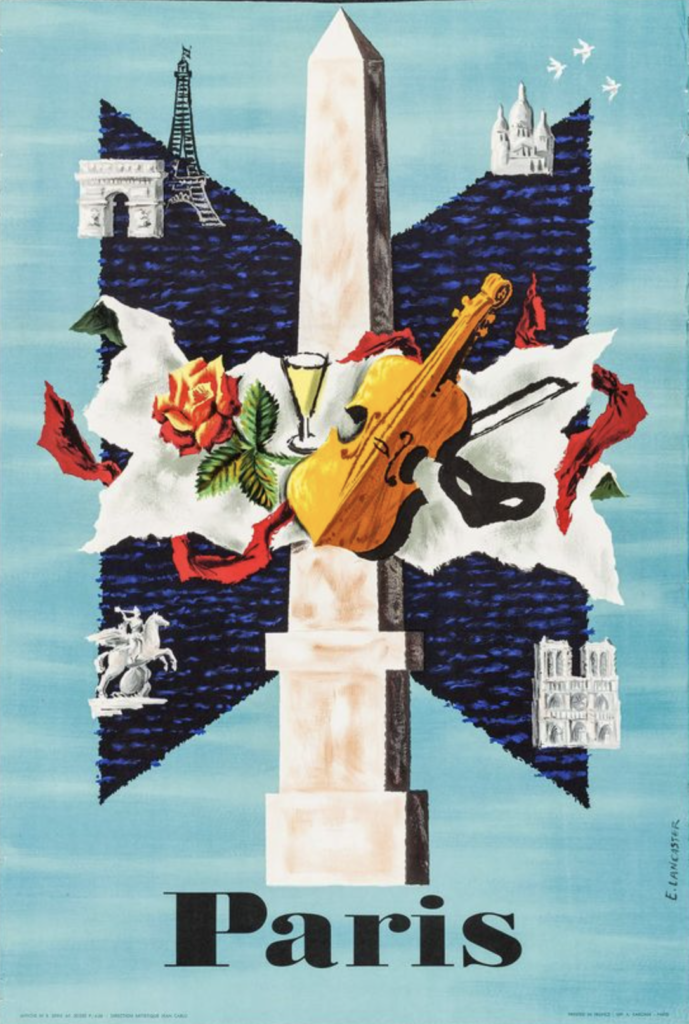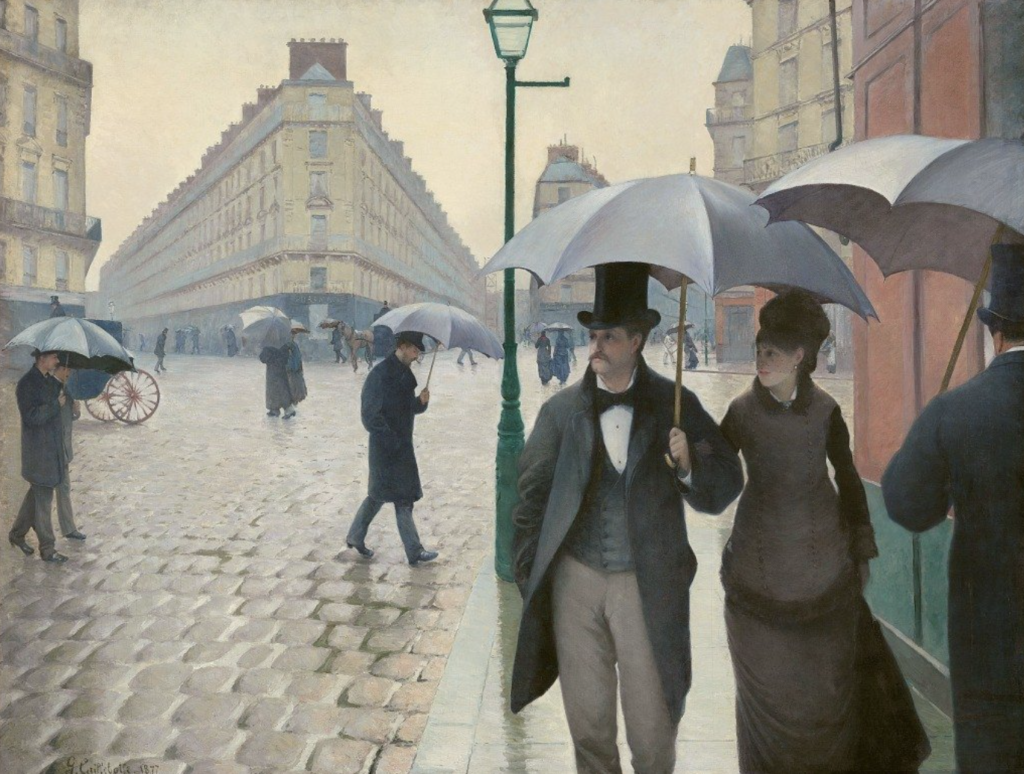19th century Paris, a hub for arts and cultural exchange
Representations of Paris as the ultimate capital of culture, full of innovative architects, artists, poets, and prominent businessmen still stand today and many people visit the French capital to search for an idyllic Belle Epoque city. The center of the universe, the leader of modern and contemporary art, the meeting point for international visual artists, and many other similar denominations show just how important Paris was for the cultural evolution of the modern world, and how today we look back at the powerful impact of a one city-all arts hub that established for nearly 100 years trends in all fields and scientific specialties.
GET MORE FROM LEVEL

The city in the legends was built in the middle of the 19th century and its myth lasted until the middle of the 20th century. WWII completed a glorious period for French culture that is today regarded as one of the most prolific periods in the entire western civilization. Not only for the general progress but as one of the best examples of cultural exchange that seemed to shape differently the fate of the city. Paris became a true nest for democracy, a place where people can express freely their ideas, can create new art, be appreciated, can invent machinery or eternal symbols, such as Eiffel Tower. Picasso, Dali, Brâncuși, and Tzara embraced and were embraced by the French culture and Paris made them great and immortal.
One of the reasons Paris is still regarded as a center of cultural life is the fact that after WWII the city came out relatively unharmed in comparison to Berlin or London. However, the cultural politics of the last two cities were stronger after WWII, livelier and more complex, and eventually, the German and British capitals took over Paris. Nowadays, the French capital keeps without a doubt its place among the top cultural producers of the world, with leading music festivals, theatre plays, fashion, arts, and a vivacious atmosphere that fascinates and lights everyone’s imagination.

Decisive factors of progress
What led to the creation of such a bursting city and why other major European cultural centers were left behind? To better understand how Paris became and maintained a front-row position in arts, one must look back at the Second French Empire’s history, the positive regulations brought by the Bonapartist emperor, and the European cultural context of the time. Although historians from the 1930s did not cast a positive light upon this period, today opinions have changed and generally, scholars believe that the Second Empire is a good example of a modernising regime. Emperor Napoleon III committed to the promotion of French business, the development of creative industries, and exports.
One of the greatest achievements of his reign is the grand railway network with a headquarter in Paris. Commerce was greatly stimulated and tied together all French regions. The economic growth was felt throughout the entire country and turned Paris into a true hub for prosperity. The French capital was not left behind, and Louis-Napoléon Bonaparte ensured Paris was rebuilt according to new standards, broad boulevards, striking new buildings, and residential districts for the rich Parisians. During these years, Paris grew dramatically in terms of population, industry, finance, commercial activity, and tourism. With the help of his prefect of Seine, Georges-Eugène Haussmann, Napoleon III invested greatly in the new face of Paris to the point that the French capital turned into a masterwork. By 1870 Paris enjoyed an excellent railway system, good connection roads, canals, and ports.
In this effervescent atmosphere, many artistic manifestations started to grow in independence, press, fine arts, design, music, literature, and theatre. Visual artists became acknowledged, photography created the need for change in painting, French inventors wanted to impress the world with their scientific discoveries, writers fed from the dazzling social-cultural environment, and people from all corners of the world were welcomed. Paris was the place where everyone could find something to love, exports from Africa and Asia, the rebirth of Italian classicism, industrial progress, and new philosophical ideas free to spread around the city and country. The newly created environment was perfect for everyone to bring his own background and to create original works without any restrictions. Parisian society was similar to a sponge that could absorb endless ideas and artistic movements. Not only that modern art was born in 19th century France but trends that speeded in the rest of the continent needed to depart from Paris. As a consequence, many writers, artists, and dancers moved to Paris, in the center of culture, and created firstly a name for themselves there. Paris was bursting with foreign influences and exotic nationalities that each had participated in the creation of this cultural conglomerate that dominated the world for so many decades.

Topic of culture
Many scholars turned their attention toward the concept of culture and examined how its influence leads to a certain type of social behaviour. Most of them agree upon the fact that defining culture implies a powerful social component, a psychological influence that is shared within groups and delimits them at the same time. Cultural influence has effects on both individual decisions and collective outcomes, especially when society decides what are the norms. Culture has a great visibility when it comes to language, architecture, arts, dressing, institutions, and so on. The sectors that form culture have a psychological impact on individuals, creating in the end “standards” that everyone accepts, adding value to cultural influence. Usually, value is given by the decision drivers that establish what is “good” for individuals or communities. Of course, this is difficult to grasp, values tend to be generic and influential but overall help obtain coherence within decisions. Normally, the decision drivers are considered a person with high status, power, political authorities, and leadership. The rest seems to be obedient and agree with the decision drivers. In the art world, for instance, founders and members of one movement disagree and challenge the legitimacy of other artistic movements. Many contemporary movies and novels about artistic life in Paris show how artists often fought ideologically, trying to argue why one movement is superior to others.
Looking back to Paris, today we can see that actually, the 19th-century French scene is very diverse and that there was enough space for everyone. After conquering the artistic world and opening up minds with Impressionist artworks, French society accepted all that was new and exotic. It embraced it as if it was its own production and transformed it into an essential part of a welcoming, modern, and integrating cultural lifestyle. Without these cultural transfers, probably Paris would have been a very different city.

Global culture today
We rarely perceive our own culture, we are born into a country with a certain culture and we learn to be happy there, inside our crystal globe. Unless we confront ourselves with different norms, we will probably not observe the boundaries and limits of our culture. Today with the globalisation process, it is difficult to say that one is living in a certain culture. It seems we live within layers of culture constructed over time, added to an initial cultural content. In fact, it is possible that we cannot escape cultural influence as what we are today is a mix of cultural movements and ideas, which in turn are a mix of other ancestral philosophies. Culture is such a dynamic phenomenon that is constantly evolving and shaping the environment through our interactions with others and by a set of norms that guide and constrain our behaviour. All of us play a small role in the evolution of culture, without being totally aware of its impact.
The direction of culture is driven by the people within it, individually and collectively. If we become more culturally conscious, our acts can be more intentional and establish a clear path. At an individual level, this is easier to achieve and it will impact our sole lives. As a community, our impact is greater and we can influence other people’s lives as well. Today we only need to be open minded and to step out of our comfort zone. We don’t need to immigrate, diversity is everywhere. Paris is not a city from a faraway belle-epoque time, but its spirit is now omnipresent. In order to have a positive impact and influence future generations, we must be willing to change some beliefs, to adapt and to accept. We can think critically about it, find any flaws there are, and find the balance. If we become agents of change, we can truly say we have contributed to the cultural collective evolution.

Leave a Reply